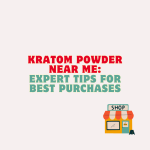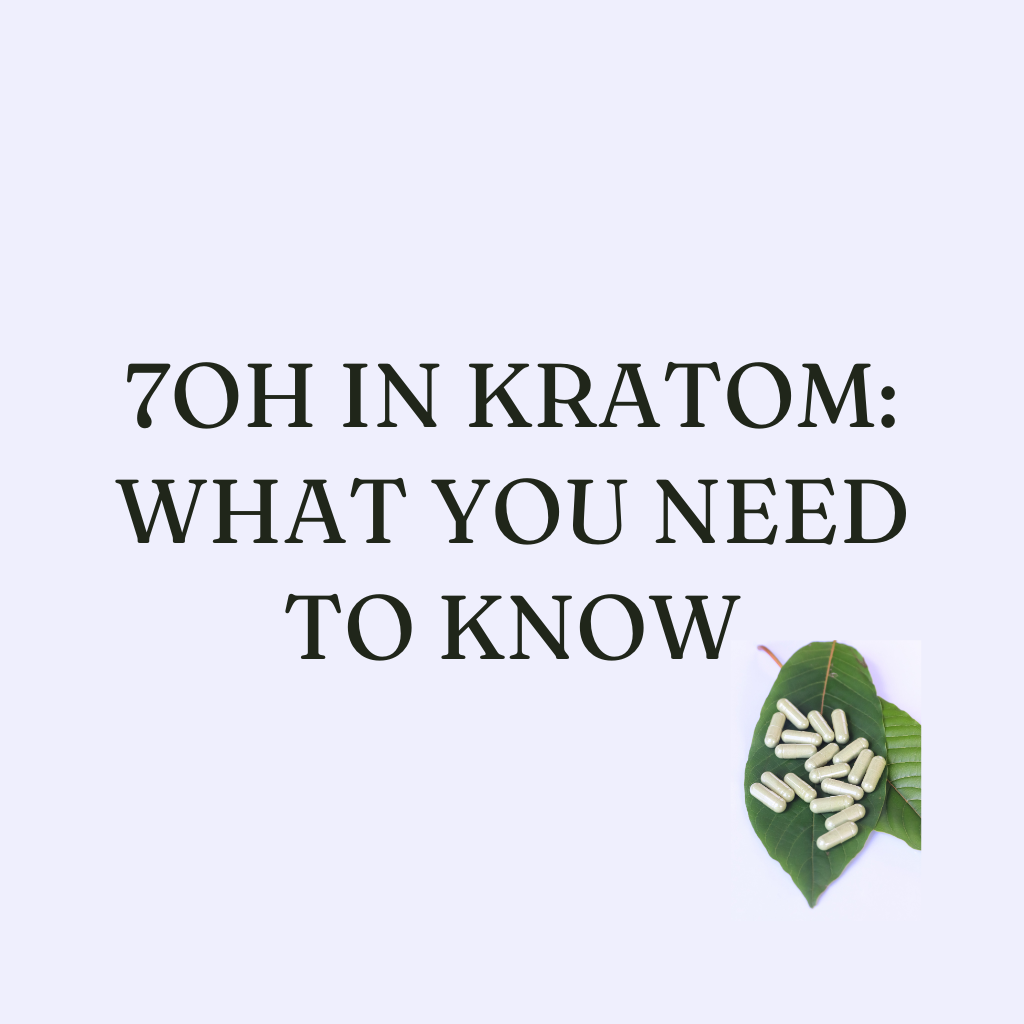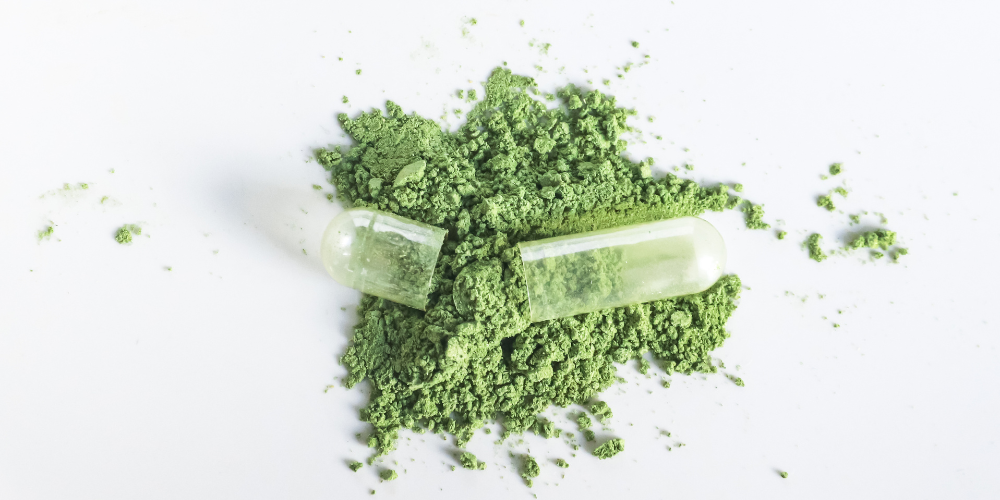
Free Shipping on Orders Over $75!
JOIN OUR EMAIL LIST FOR 20% OFF, weekly coupons up to 30% OFF
Why You Should Avoid Snorting Kratom and When to Get Help?

Kratom is one of the most recommended herbal extracts for recreational and medicinal use. There are numerous methods to consume it, such as ingesting its capsule and powdered form. However, a few rare individuals think snorting Kratom is the best way to enjoy it.
So, can you snort kratom? It’s not exactly similar to snorting other powdered substances. While it can deliver the “desired” effects much faster, it also carries a few risks if you abuse kratom by snorting.
Is snorting Keaton a good or bad idea? This post will discuss why most legitimate Kratom sellers do not promote their consumers to snort Kratom like they do with similar products. Read on.
What Exactly Is Kratom?
Kratom is a Southeast Asian herb ((Mitragyna speciosa) commonly used to ease stress, anxiety, improve mood, and promote relaxation. In contrast to other natural medicines, the size of the dose and how it is ingested influence the type of effects you will experience.
One of the most common applications for Kratom is to alleviate the symptoms of opioid withdrawal. Kratom can also help with pain management and boost energy.
Kratom can be consumed in various ways, including capsules, extracts, shots, and powders. The three best ways to take Kratom, according to manufacturers and consumers alike, are:
- Drinking Kratom tea
- Using the Toss and Wash Method
- Ingesting Kratom capsules
Moreover, you can also take in Kratom and other substances such as grapefruit, turmeric, akuamma seed, and chamomile tea, all of which are potentiators. These ingredients can help your body efficiently process the alkaloids that are present in Kratom.
After roughly 15 minutes of use, the effects of Kratom begin to emerge in your body. You can experience the effects of Kratom for up to five hours if you take a lot of it.
Kratom isn’t currently prohibited, and it’s been relatively easy to obtain via the Internet. It’s sometimes marketed in packages labeled “not for human consumption” as a green powder. It’s also available as a pack of gum or extract.
The perceived benefits of Kratom are often from anecdotal accounts rather than scientific research. According to some testimonies, Kratom can help you relax your muscles and alleviate chronic discomfort. Kratom can also help you relax your muscles and lessen chronic pain.
We encourage reading more about the benefits of Kratom on the American Kratom Association‘s (AKA) website. They are the nation’s premier Kratom advocacy organization and can assist you in learning more about Kratom’s many applications.
Why Would A Person Snort Kratom?
Oral use of Kratom is the most typical method of administering it. There are various ways to consume it orally, but some popular techniques include preparing tea or eating edibles. Another way to consume Kratom is through the use of incense.
However, there is another method of consuming Kratom that a few people are trying out– snorting. This practice begs the question, can you snort Kratom?
Some drugs, like cocaine, get into the brain rapidly when snorted or injected. Therefore, some people assume that they could feel the effects of Kratom quicker if they snort it.
Many narcotics like heroin, oxycontin, and fentanyl are misused by nasal inhalation. However, Kratom is a different drug that doesn’t need to be snorted if you want to experience its effect faster.
After all, It only takes five to ten minutes for Kratom’s effects to manifest after intake. The euphoric effects of Kratom last two to five hours, depending on how much it is consumed.
Although it is possible to snort Kratom, doing so is not recommended. If you abuse kratom by snorting, it can be extremely harmful over time, resulting in various adverse short-term and long-term effects. Individuals that snort this drug are at a higher risk of experiencing adverse side effects and overdosing.
Inhaling Kratom? Is it Safe
Inhaling Kratom indirectly, such as using incense, is reasonably safe compared to snorting it. However, the safest way to consume Kratom is through the mouth.
When Kratom is taken orally, it must first pass through the intestines and stomach before entering the bloodstream. As the chemical’s level in your blood rises and then plateaus, peak effects can take an hour or two to appear.
Snorting Kratom, on the other hand, permits it to enter the bloodstream practically instantly. The intoxicating drug passes through your mucous membranes and into your circulation.
The chemical then travels faster to the brain, where it binds to receptors and produces a quick, strong high that lasts longer than oral consumption.
Kratom contains an excessive amount of plant fiber and cellulose, which have little to no influence on the drug’s effects. This fact means that a person would have to snort a considerable amount of Kratom before they begin to experience its intoxicating effects.
While smoking Kratom is an alternative method of consumption, it is not as effective as taking it as a tablet, chewing, or drinking its tea. In short, abuse of Kratom by snorting is not recommended because it has many risks involved.
Snorting Kratom Short-Term Side Effects
Our nose isn’t meant to inhale powders, be it Kratom or other similar substance. The short-term side effects of snorting Kratom are mainly identical to those with other drugs. Lung infections, nasal obstructions, and impaired respiratory tracts can all result from this malpractice.
As you know, Kratom is not digested when it is inhaled. Instead, it accumulates in the upper respiratory tract. This action will block nasal pillories over time, causing your nasal passageways to get obstructed, and you may need to take a lot more to achieve the same impact.
Some of the risks that are associated with snorting Kratom include nosebleeds, itching, and nausea.
Meanwhile, some of the long-term negative impacts of snorting Kratom include:
- Lung infections
- Lung blood clots
- Upper respiratory system damage
- Nasal inflammation
- Pulmonary embolisms
- Mucous membrane damage
If someone asked, is snorting Keaton a good or bad idea? The answer is the latter, as no Kratom shop owner would suggest it.
Kratom Addiction And Withdrawal
Like other opioid-related medications, Kratom can cause dependency, which means users will experience physical withdrawal symptoms if they stop taking it.
Individuals who consume Kratom, especially at large doses, might acquire a psychological and physical reliance on the drug. Thus, when a person stops using the medicine, withdrawal symptoms may occur.
When you stop taking Kratom, you may experience withdrawal symptoms if you’re addicted to it or physically dependent on it. They often begin within one or two days and can persist anywhere from three to 10 days.
Hence, you are often advised that you start with the smallest amount of Kratom during your first few months of taking it. You can gradually increase the dose, but only to what is considered a safe amount.
People who overdose on Kratom may experience symptoms such as:
- Hallucinations
- Respiratory problems
- Extreme fatigue
- Tremors
Persons who have misused other depressants, such as opioids, Kratom usually has limited effects. It may make the person feel normal, indicating tolerance and dependence on opioid-like compounds, but Kratom does not make this group intoxicated.
If you or someone you know exhibits these symptoms after taking in Kratom, it’s crucial to seek medical attention right away. Doing so can prevent more dangerous health problems from happening.
Right now, there isn’t a specific medical treatment to treat Kratom addiction. More research is needed to understand which sorts of treatments are most beneficial.
Another thing you should take note of is that Kratom is often detected on drug tests, especially when they take your urine and blood samples. Fortunately, you can flush out Kratom out of your system by hydrating, consuming acidic foods, and reducing your caffeine intake.
Getting Help For Kratom Abuse
Nasal intake of Kratom carries far too many hazards, and it can be dangerous if done for a lengthy period. However, if you ever feel that you have been abusing this substance more than its intended general use, it’s time to get help.
In general, substance misuse and addiction treatment are divided into three stages: physical stabilization, therapy, and recovery. Detoxing the substance safely from the body is typically a component of the physical stabilization process.
To achieve this, a medical detox clinic provides medications and medical supervision. The treatment model includes therapy and counseling, which can be provided in a residential or outpatient setting.
Medication may be helpful during medical detox from Kratom, just as it is during opioid withdrawal. Anti-inflammatory drugs, anxiolytic pharmaceuticals, antidepressants, and other pharmacological substances effectively treat kratom addiction.
You shouldn’t be ashamed of going to a Kratom rehab center, especially if you want to stop your substance abuse. Making an appointment with your doctor is the best approach to learn about local addiction treatment choices.
Conclusion
Snorting Kratom and other powdered substances, for that matter, isn’t safe. Nasal ingestion of Kratom has too many risks and few if any benefits at all. There are many far safer methods of consuming Kratom that will do less harm to your body.
For more information about Kratom and how to safely use it for recreation and medicine, visit KratomKrush.com. They have a long list of Kratom products from extracts, shots, powder, and capsules tested and proven safe.
The website also has various materials covering everything you need to know about Kratom, including tips on using it efficiently.
Did like a post? Share it with:
nimesh
Search
Table of Index
Post Categories
Related Posts
Where to buy kratom near me is a question that many users find themselves asking when looking for quality products
Finding the best Kratom Powder near me can feel difficult with so many options available locally. But steering through stores
Are you one of those scrolling on the internet for ‘7ALKS near me’? Are you looking for 7ALKS, 7-Hydroxy 15mg
7OH, or 7 hydroxymitragynine, is a significant alkaloid found in kratom that plays a crucial role in its effects. This
Curious about 7OH kratom? You’re not alone. As more people explore different botanical products, 7 hydroxymitragynine (7OH) has emerged as
Have you ever accidentally over-consumed kratom and experienced a hangover? Well, the good news is they’re easily avoidable. A kratom
Disclaimer
Must be 21 years or older to purchase kratom. Products are not for internal use. The US FDA Has Not Approved Kratom as a Dietary Supplement. We do not ship to the following states, cities and counties in the US where Kratom is banned Alabama, Arkansas, Indiana, Rhode Island, Tennessee, Vermont, Wisconsin. Sarasota County, Union County, Denver, San Diego, Louisiana. All sales should be 100% U.S. sales only.
Consult with a medical professional before use if taking prescription medication or affected by a serious medical condition. Always seek medical advice before using this or any other supplemental dietary product. These statements have not been evaluated by the Food and Drug Administration (FDA).
© 2025 Kratom Krush. All Rights Reserved. Operated by XXIV LLC Privacy PolicyTerms & Conditions











